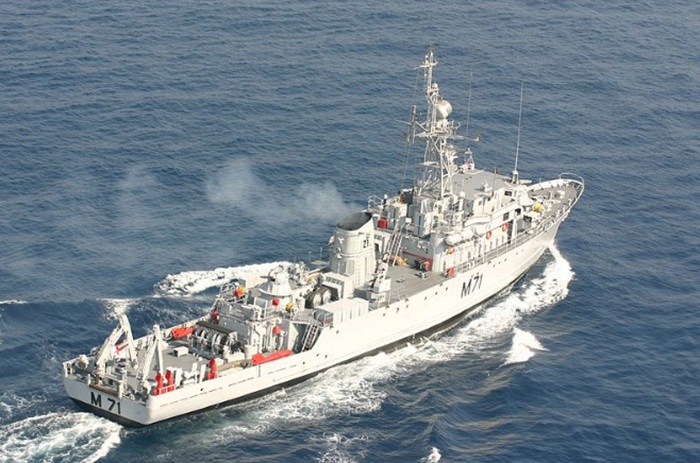
India has restarted its plan to build 12 specialized warships that can detect and destroy underwater mines. These ships are critical to protect ports and maritime trade from enemy forces.
The defence ministry is likely to present the proposal, worth around ₹44,000 crore, to the Defence Acquisition Council led by Defence Minister Rajnath Singh for approval, a TOI report stated.
Tender to be issued soon for Indian shipyards
According to defence ministry sources, the procurement will move ahead once the “acceptance of necessity (AoN)” is granted.
An open tender or request for proposal (RFP) will then be issued, inviting Indian shipyards to submit their technical and commercial bids.
“It will take at least 7-8 years, if not more, for the first MCMV to roll out after the contract is inked,” a source said.
Urgent need due to rising submarine activity
These mine countermeasure vessels (MCMVs) are considered urgent due to the regular movement of Chinese submarines in the Indian Ocean Region.
Chinese nuclear and conventional submarines can lay underwater mines quietly. Pakistan is also expanding its submarine fleet and is expected to receive eight new Yuan-class diesel-electric submarines from China.
India’s Navy currently has no dedicated MCMV in service. Earlier ships, including six Karwar-class and two Pondicherry-class minesweepers, have been retired.
As a temporary solution, the Navy uses “clip-on mine countermeasure suites” on other ships. However, the Navy needs at least 24 MCMVs to secure India’s 7,516-km coastline, which includes 13 major ports and over 200 minor ones.
Mines pose threat from state and non-state actors
Underwater mines are low-cost and easy to deploy. Both state and non-state actors can use them to damage or destroy warships, merchant vessels, and tankers by blocking access to harbours and ports.
The plan to acquire 12 MCMVs started in 2005. Goa Shipyard had partnered with South Korea’s Kangnam to build the vessels.
But the project, worth ₹32,000 crore, was cancelled by the Ministry of Defence in 2017-18 after disagreements over cost, technology transfer, and build strategy.
New ships to include advanced mine detection systems
Each MCMV will weigh around 900-1,000 tonnes and feature a non-magnetic hull. The ships will use high-definition sonar, acoustic and magnetic sweeps to locate mines.
Remote-controlled underwater vehicles will then detonate the mines from a safe distance.
Part of larger naval expansion plan
The Indian Navy, which has over 130 warships, recently played a key role in Operation Sindoor by forward-deploying the aircraft carrier INS Vikrant, other warships, and submarines in the northern Arabian Sea to deter Pakistan.
Currently, 60 warships and vessels are being built in Indian shipyards. The Navy will also commission INS Tamal, its second 3,900-tonne multi-role frigate built in Russia, next month in Kaliningrad.
The Navy has also received initial approvals for 31 more warships, including seven new-generation frigates, eight corvettes, and six stealth submarines.
However, due to delays in shipbuilding and retirement of older vessels, the Navy is expected to reach a fleet size of only around 160 warships by 2030. (Economic Times)
